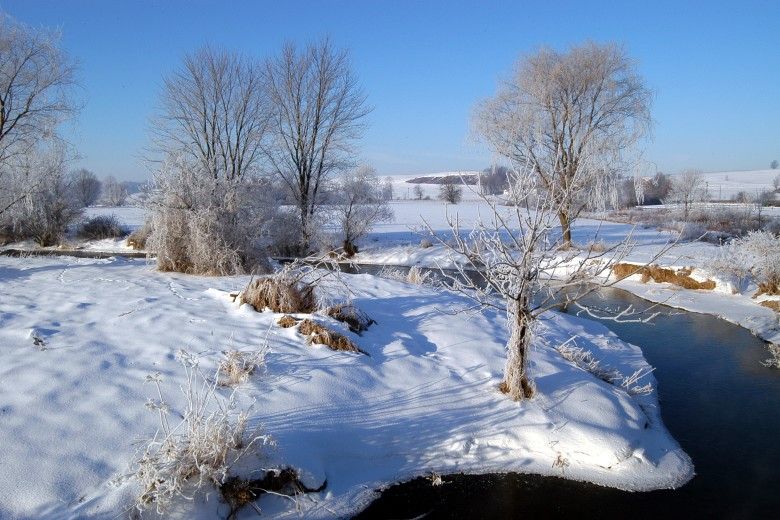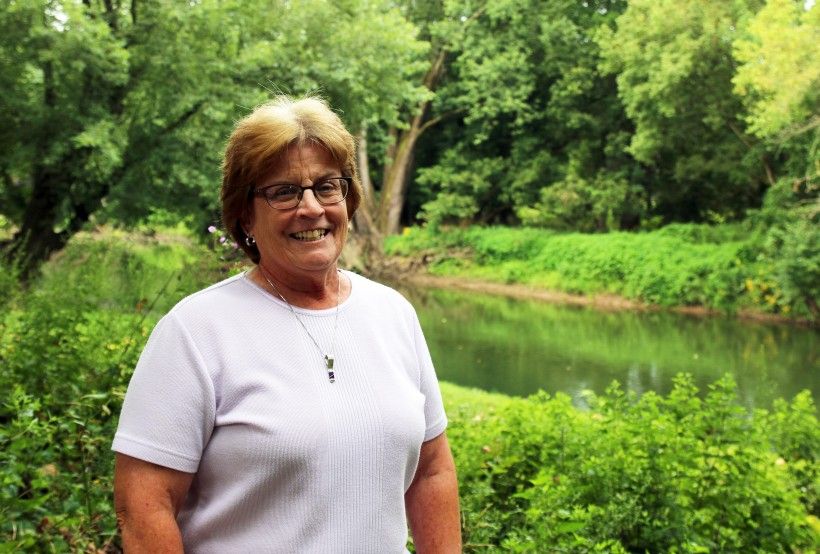Winter Scenes and Cleaner Streams

As we prepare for the winter months ahead, learn about some of the challenges associated with keeping icy roads safe and waterways clean with this special guest article featuring Jan Bowers, P.G.

The beautiful landscapes of Chester County are on display all throughout the year. While it’s difficult to pick a favorite season, certainly one of the favorites is when the winter snow blankets the County’s rolling fields, hills and valleys.
Traversing this magical wintery countryside is a benefit brought to us not only by the County’s beautiful landscapes, but also by the road crews of its 73 municipalities, Pennsylvania Department of Transportation (PennDOT), and the Pennsylvania Turnpike Commission. These crews work night and day to maintain safe roads across Chester County through winter’s snow and ice.
PennDOT estimates that there are 3,670 miles of roadways in Chester County, and 12 million vehicle miles traveled on those roadways every day. (ref #1) These staggering statistics underscore the challenge and importance of the road crews’ efforts to deice and clear the County’s winter roads. Private, commercial and institutional landowners also work through the winter to keep their pavements clear for safe vehicle and pedestrian movement, and accessible parking. Of Chester County’s 760 miles of land area, approximately 10% (nearly 80 square miles) is covered by roadways, parking areas, driveways, walkways, pavements, rooftops and other impervious surfaces, all draining into the County’s 2,350 miles of streams and headwater tributaries.
As part of a cooperative program with Chester County and CCWRA, the U.S. Geological Survey (USGS) has been monitoring several parameters of water quality in streams and groundwater across the County since 1970, and periodically in the Brandywine since 1948. Over the past five decades, many changes have occurred in the patterns of land use, land cover, weather and water use. However, from the USGS monitoring, the one water quality parameter that stands out with the most rapid and alarming increasing trend is chloride. (ref #2) (ref #3)
Chloride is a naturally occurring ion in most waters, but there are many anthropogenic sources that can cause chloride concentrations to increase. Common sources include wastewater treatment, fertilizers and animal manure. Road and pavement deicers can also be a major source of chloride when melt water from roadways, driveways and parking lots carry residual deicing materials into nearby groundwater and streams. Use of salt for roadway deicing reportedly began in the United States shortly after World War II. The second largest use of salt in the United States since 1975 is deicing (ref #4). In 2014, an estimated 22 million tons of salt were used on roadways annually, roughly 137 pounds for every American (ref #5).
![Figure 2 [Source: "Chester County Water Quality Summary: Chloride and Specific Conductance", Chester County Water Resources Authority, May 2019]](/sites/default/files/styles/body_full/public/media/ChlorideSummary_Figure2.jpg?itok=h-sdAlUf)
The chloride levels detected in these samples have been increasing since the monitoring began, but the rate of increase has accelerated since 2006. The measured concentrations and rate of increase are highest at sampling locations that are downstream of land areas with a large percentage of impervious surface cover, including roadways.
For example, Figure 2 shows the highest chloride level in 2018 occurred at sampling location “D” on (East) Valley Creek near Valley Forge National Historic Park; the area draining to this station includes the Route 30 commercial corridor from Frazer to Berwyn, as well as Route 202 and the PA Turnpike. The lowest level was found at French Creek, upstream of Phoenixville.
![Figure 3 [Source: "Chester County Water Quality Summary: Chloride and Specific Conductance", Chester County Water Resources Authority, May 2019]](/sites/default/files/styles/body_full/public/media/ChlorideSummary_Figure3.jpg?itok=xDPA7D2J)
To understand how water quality is changing across Chester County, Figure 1 presents the lowest (minimum) and highest (maximum) chloride concentrations found among the 18 sample sites each year. Also shown are the “average” chloride concentrations of all 18 locations for each year. This graphic illustrates how the lowest (minimum) and average concentrations are increasing over time. However, most obvious is the significant increase in the highest (maximum) concentration over time.
![Figure 1 [Source: "Chester County Water Quality Summary: Chloride and Specific Conductance", Chester County Water Resources Authority, May 2019]](/sites/default/files/styles/body_full/public/media/ChlorideSummary_Figure1.jpg?itok=5b4XIuj2)
Although the concentrations of chloride in Chester County’s streams appear to be well below the drinking water level of 250 mg/L, another striking trend has emerged—a decrease in insect diversity. USGS samples and classifies insects at each of its 18 locations, and calculates a score based on the diversity of species found that must have clean water to survive. Referred to as the Invertebrate Biological Index, on a scale of 1 to 100, a score of 100 is best.
USGS found that biological index scores are always less than 90 at all sample sites where chloride levels exceed 50 mg/L. While increased chloride levels may not be the sole cause of these suppressed biological diversity scores, their occurrence reflects how the “runoff cocktail” from urbanizing areas is impacting the water quality of the streams and groundwater of Chester County.
As we continue to monitor these emerging trends and related impacts on the watershed, it is important to remember that clean water is everyone’s business—we each play an important role in protecting and improving the water quality and ecological integrity of our streams, groundwater and watersheds. There are many actions that can be taken at both the local and individual level that can help ensure cleaner water. As the seasons change and the fall foliage turns to wintry landscapes across Chester County, consider what you can do to reduce your own “salt footprint”—no action is too small.
Actions that reduce your “salt footprint” include:
- storing deicing material stockpiles under cover and where they cannot drain to storm drains, stormwater infiltration facilities or directly into streams
- using only what is needed for deicing salts, avoiding unnecessary over-applications
- where practical, utilizing non-chloride or non-chemical materials (sand, grit, etc.) for deicing and improving traction
- encouraging those who contract for snow removal and deicing services to require the contractor to carefully meter their salt dispensers
- sharing information and techniques for minimizing salt and brine applications among local and state road management entities will allow improved practices to become common-place more quickly
- minimizing use of fertilizers to the amount needed and avoiding over-application
For more information, contact the Brandywine Conservancy or your local watershed conservation organization.
Acknowledgements:
The author wishes to thank Mr. Craig Thomas (Chester County Water Resources Authority) and Mr. Andrew Reif (U.S. Geological Survey) for their technical, analytical, and written contributions to this article (August 2019).
References:
- “Pennsylvania Highway Statistics – 2017 Highway Data” PUB 600 (7-18), Pennsylvania Department of Transportation
- “Chester County Water Quality Summary: Chloride and Specific Conductance”, Chester County Water Resources Authority, May 2019.
- “Evaluation of Long-Term Trends in Hydrologic, and Water-Quality Conditions, and Estimation of Water Budgets through 2013, Chester County, PA.”, U.S. Geological Survey in cooperation with Chester County Water Resources Authority, Scientific Investigations Report 2017-5025, Ronald. A. Sloto and Andrew G. Reif.
- “Chloride in Groundwater and Surface Water in Areas Underlain by the Glacial Aquifer System, Northern United States,” U.S. Geological Survey Scientific Investigations Report 2009-5086, John R. Mullaney, D.L. Lorenz, and A.D. Arntson, 2009.
- “What Happens to All the Salt We Dump on the Roads?”, Smithsonian Magazine, Joseph Stromberg, Smithsonian.com, January 6, 2014.
Resources:
- “USGS Chester County Monitoring/Studies”, Chester County Water Resources Authority website
- “Pennsylvania Water Science Center – Chester County Studies”, U.S. Geological Survey website